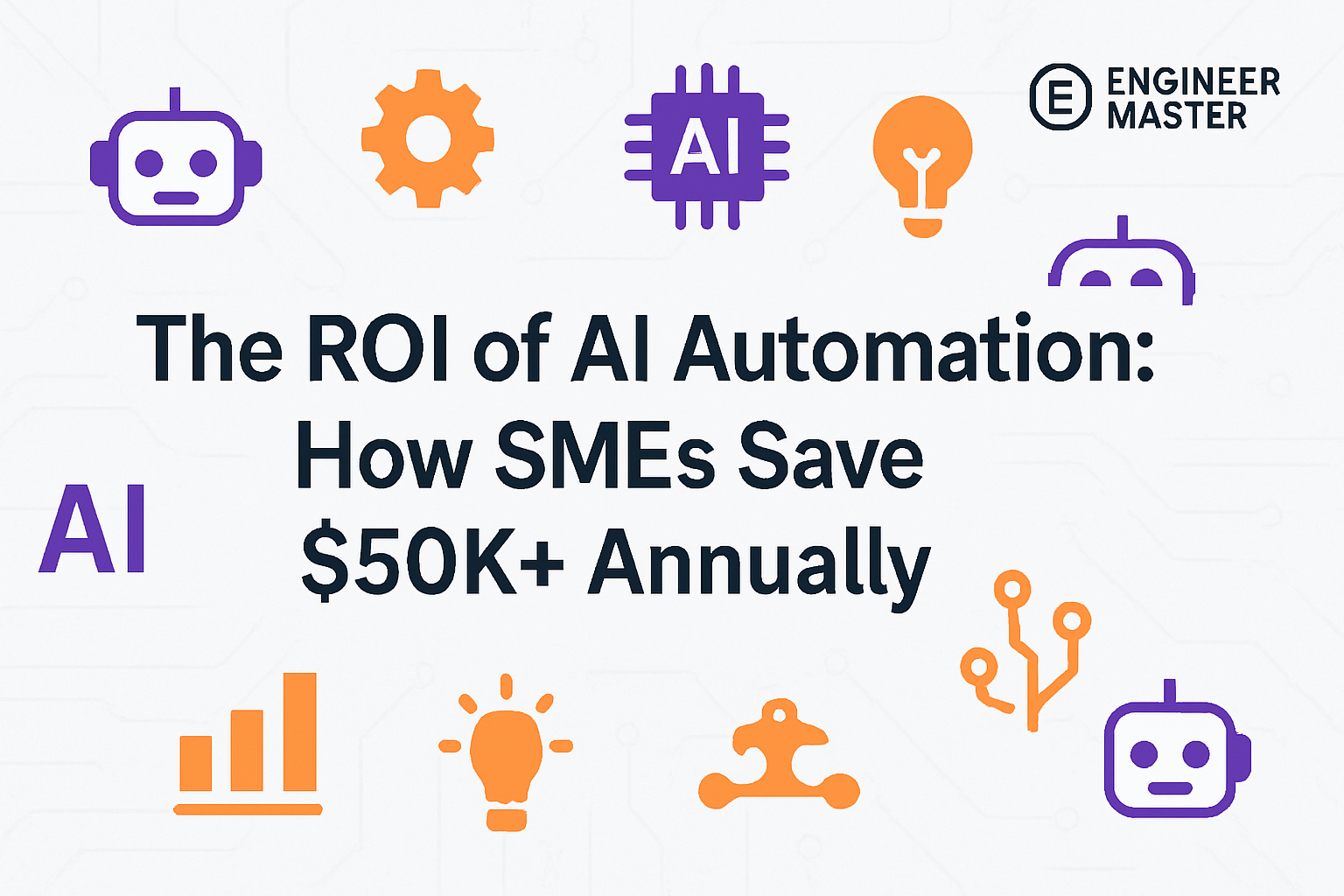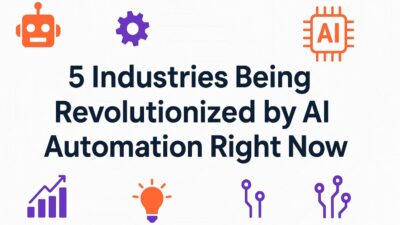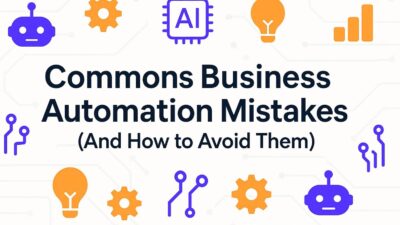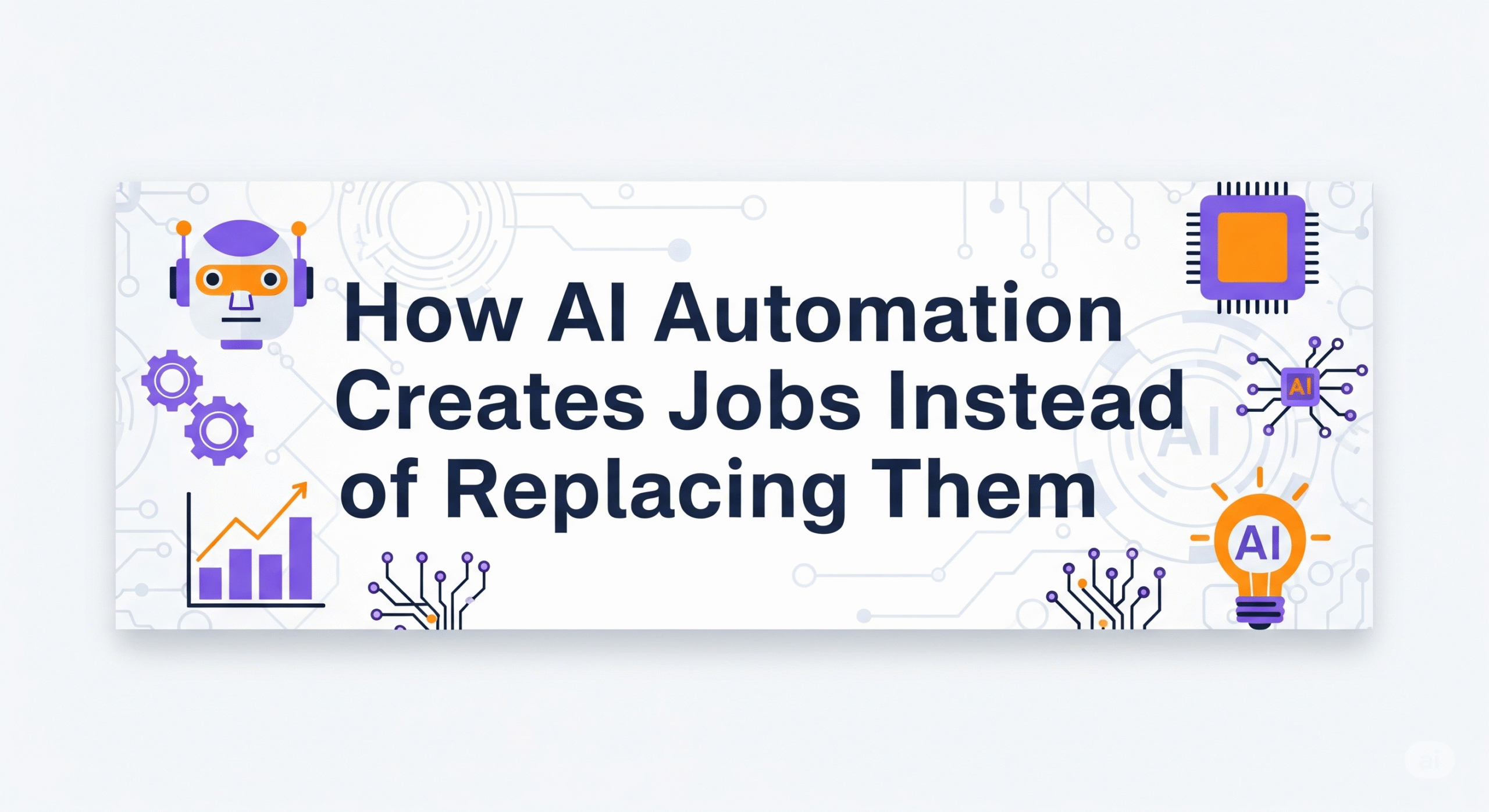Small and Medium Enterprises (SMEs) are discovering that AI-powered automation isn’t just a technological upgrade—it’s a financial game-changer. In 2025, businesses implementing strategic automation are consistently achieving annual savings exceeding $50,000, transforming their operational efficiency and bottom-line performance.
The Hidden Costs of Manual Processes
Most SMEs unknowingly hemorrhage money through manual operations. Consider the typical workflow bottlenecks: employees spending hours on data entry, customer service representatives handling routine inquiries, finance teams manually processing invoices, and managers creating reports from scattered spreadsheets.
These seemingly minor inefficiencies compound exponentially. A single data entry error can trigger a cascade of corrections, delays, and customer dissatisfaction. Manual invoice processing that takes 3-4 days instead of automated 30-minute workflows directly impacts cash flow and vendor relationships.
The AI Automation Advantage: Where the Savings Come From
Labor Cost Optimization represents the most immediate ROI driver. When AI handles routine tasks, employees transition to strategic roles that generate higher value. A customer service representative freed from password resets can focus on complex problem-solving and relationship building.
Error Elimination delivers substantial financial impact. Manual processes typically carry 3-5% error rates, while AI automation reduces this to under 0.5%. For a business processing 1,000 transactions monthly, this translates to preventing 25-45 costly mistakes every month.
Process Acceleration creates competitive advantages. AI-powered workflows operate continuously, reducing approval cycles from days to minutes and enabling faster response times that improve customer satisfaction and retention rates.
Data-Driven Decision Making replaces guesswork with insights. Real-time analytics and automated reporting provide leaders with actionable intelligence, eliminating the weeks traditionally spent compiling monthly reports.
Real-World Savings Breakdown: The $50K+ Formula
A typical 25-employee SME implementing comprehensive AI automation across three core areas achieves remarkable results:
Administrative Automation eliminates 15-20 hours of weekly manual tasks. With an average administrative cost of $25/hour, this saves $19,500-$26,000 annually.
Customer Service Enhancement through AI chatbots and intelligent routing handles 70% of routine inquiries automatically. This efficiency gain saves approximately $18,000 in reduced staffing needs while improving 24/7 availability.
Financial Process Streamlining accelerates invoice processing, expense management, and reporting. The time savings and error reduction typically deliver $15,000-$20,000 in annual benefits.
Combined impact: $52,500-$64,000 in direct annual savings, before considering secondary benefits like improved customer retention and faster growth capabilities.
Industry-Specific Automation Opportunities
Professional Services firms leverage AI for client onboarding, project tracking, and billing automation. Document generation and contract management systems reduce administrative overhead by 40-60%.
E-commerce Businesses implement inventory management automation, customer support chatbots, and marketing workflow optimization. These implementations typically reduce operational costs by 30-45%.
Manufacturing SMEs focus on supply chain automation, quality control monitoring, and predictive maintenance scheduling. The precision and consistency of AI systems prevent costly downtime and material waste.
Healthcare Practices automate appointment scheduling, patient communications, and billing processes. These improvements enhance patient experience while reducing administrative burden by 35-50%.
Implementation Strategy for Maximum ROI
Phase 1: Assessment and Planning involves identifying the highest-impact automation opportunities. Focus on processes that are repetitive, time-consuming, and prone to errors.
Phase 2: Pilot Implementation targets 1-2 specific workflows for initial automation. This approach minimizes risk while demonstrating tangible benefits to stakeholders.
Phase 3: Scaling Success expands automation across additional processes based on pilot results. Successful implementations create momentum for organization-wide adoption.
Phase 4: Optimization and Innovation involves continuous monitoring and improvement of automated workflows. Regular performance analysis ensures sustained ROI growth.
Selecting the Right Automation Tools
CRM Automation Platforms like HubSpot or Salesforce offer comprehensive customer management automation with built-in AI capabilities for lead scoring and communication optimization.
Financial Automation Solutions such as QuickBooks Advanced or Xero provide intelligent expense categorization, automated invoicing, and real-time financial reporting.
Communication Automation Tools including Zendesk AI or Intercom enable sophisticated customer support automation with natural language processing capabilities.
Document Management Systems like DocuSign or PandaDoc streamline contract creation, approval workflows, and digital signature processes.
Measuring and Maximizing Your Automation ROI
Time Tracking establishes baseline measurements for manual processes before automation implementation. Document hours spent on routine tasks to calculate accurate savings.
Error Rate Monitoring compares pre- and post-automation accuracy levels. Track mistakes, rework requirements, and customer complaints to quantify quality improvements.
Customer Satisfaction Metrics measure the impact of faster response times and improved service consistency. Higher satisfaction scores often correlate with increased retention and revenue growth.
Employee Productivity Analysis assesses how automation affects staff performance and job satisfaction. Employees freed from mundane tasks typically demonstrate higher engagement and creativity.
Overcoming Common Implementation Challenges
Change Management requires clear communication about automation benefits and employee role evolution. Emphasize how AI enhances rather than replaces human capabilities.
Technology Integration demands careful planning to ensure new automation tools work seamlessly with existing systems. Prioritize platforms with robust API capabilities and integration support.
Data Security becomes critical when implementing AI automation. Choose solutions with enterprise-grade security features and compliance certifications relevant to your industry.
Scalability Considerations involve selecting automation platforms that can grow with your business. Avoid solutions that become limiting factors as your operations expand.
The Competitive Advantage of Early Adoption
SMEs implementing AI automation in 2025 gain significant competitive advantages over manual-process competitors. Faster response times, higher accuracy, and lower operational costs enable aggressive pricing strategies and superior customer service.
Market Positioning improves when automation enables consistent, professional interactions across all customer touchpoints. This reliability builds brand trust and customer loyalty.
Growth Capacity expands as automation eliminates traditional scaling constraints. Businesses can handle increased volume without proportional staff increases, improving profit margins.
Innovation Resources become available when staff time shifts from routine tasks to strategic initiatives. This capacity enables SMEs to pursue new opportunities and competitive differentiation.
Future-Proofing Your Automation Investment
Continuous Learning ensures your team stays current with evolving AI capabilities. Regular training and platform updates maximize ongoing ROI from automation investments.
Performance Monitoring through detailed analytics identifies optimization opportunities and emerging automation possibilities. Data-driven improvements compound savings over time.
Strategic Expansion involves gradually extending automation to additional business areas. Success in core processes creates confidence and resources for broader implementation.
📞 Phone: 1-347-543-4290
The evidence is clear: SMEs embracing AI automation are not just surviving in today’s competitive landscape—they’re thriving. With documented savings consistently exceeding $50,000 annually, automation represents one of the most reliable paths to improved profitability and sustainable growth. The question for SME leaders isn’t whether to implement AI automation, but how quickly they can begin capturing these transformative benefits.
Contact Engineer Master Labs Today
Schedule Your Free AI Call Center Assessment
📧 Email: [email protected]
🌐 Website: emasterlabs.com
📍 Address: 1942 Broadway Suite 314 Boulder, CO 80302 USA
Engineer Master Labs – You Think, We Automate, You ProfAddress: 1942 Broadway Suite 314 Boulder, CO 80302 USA
Engineer Master Labs – You Think, We Automate, You Profit





